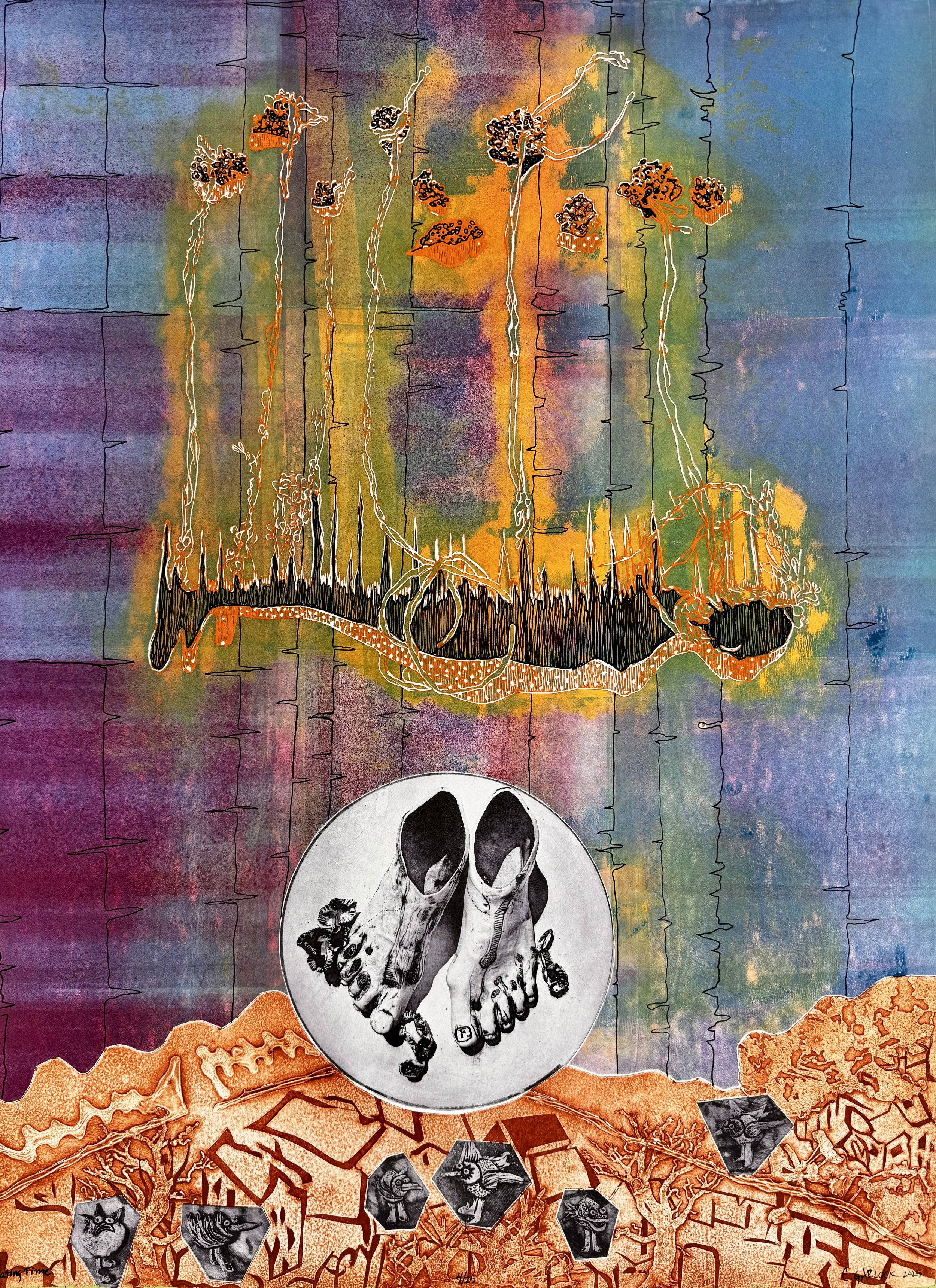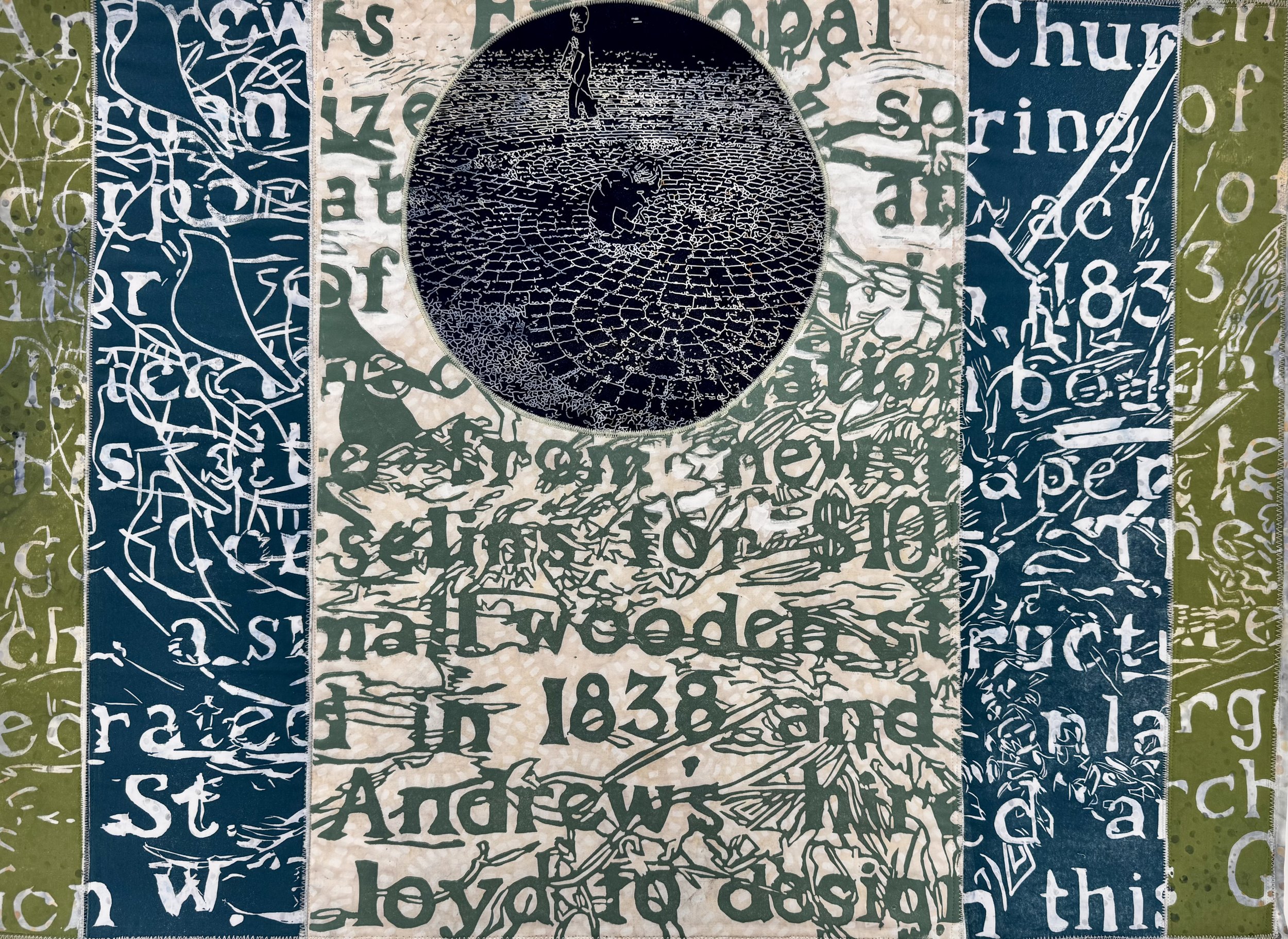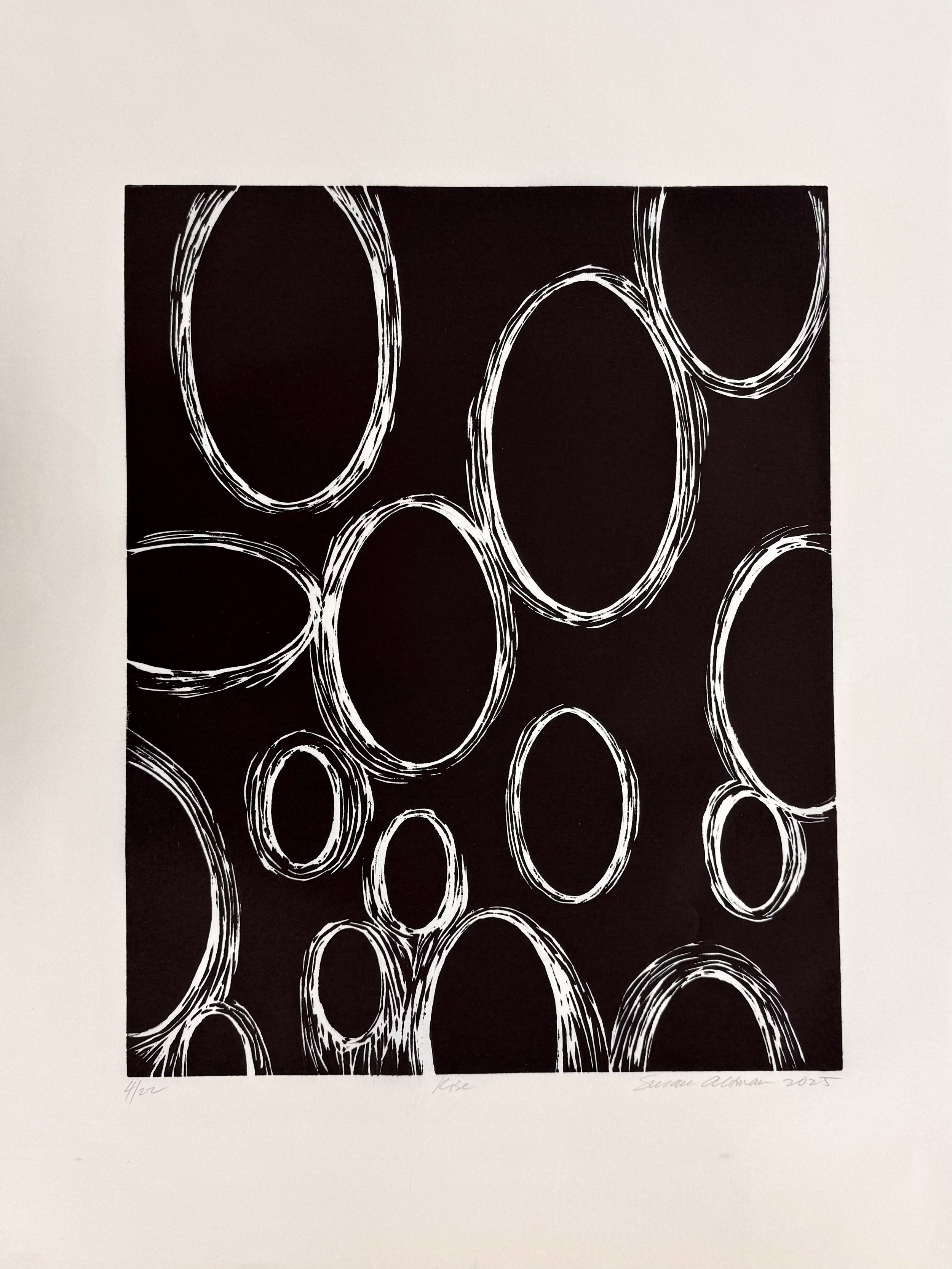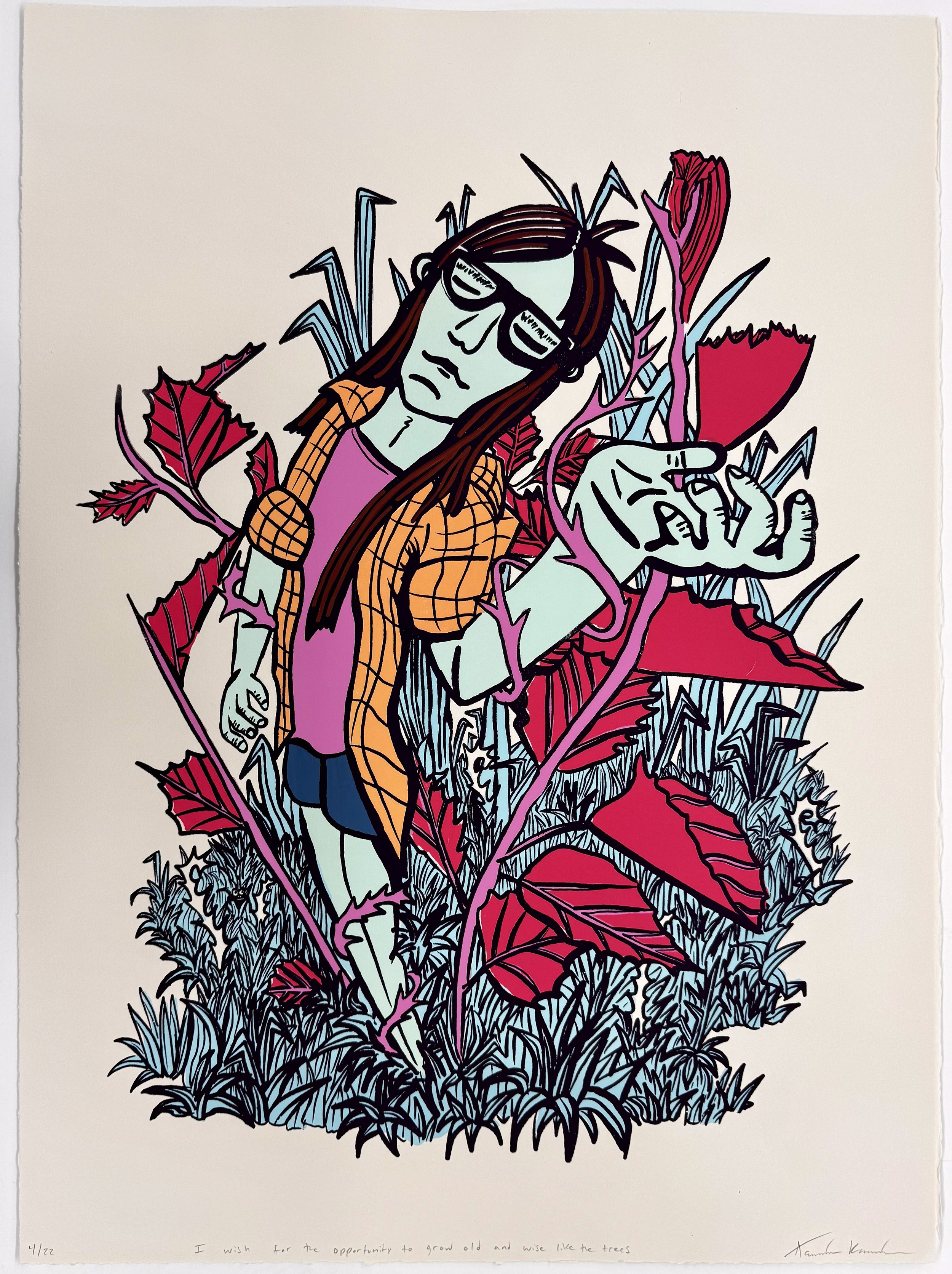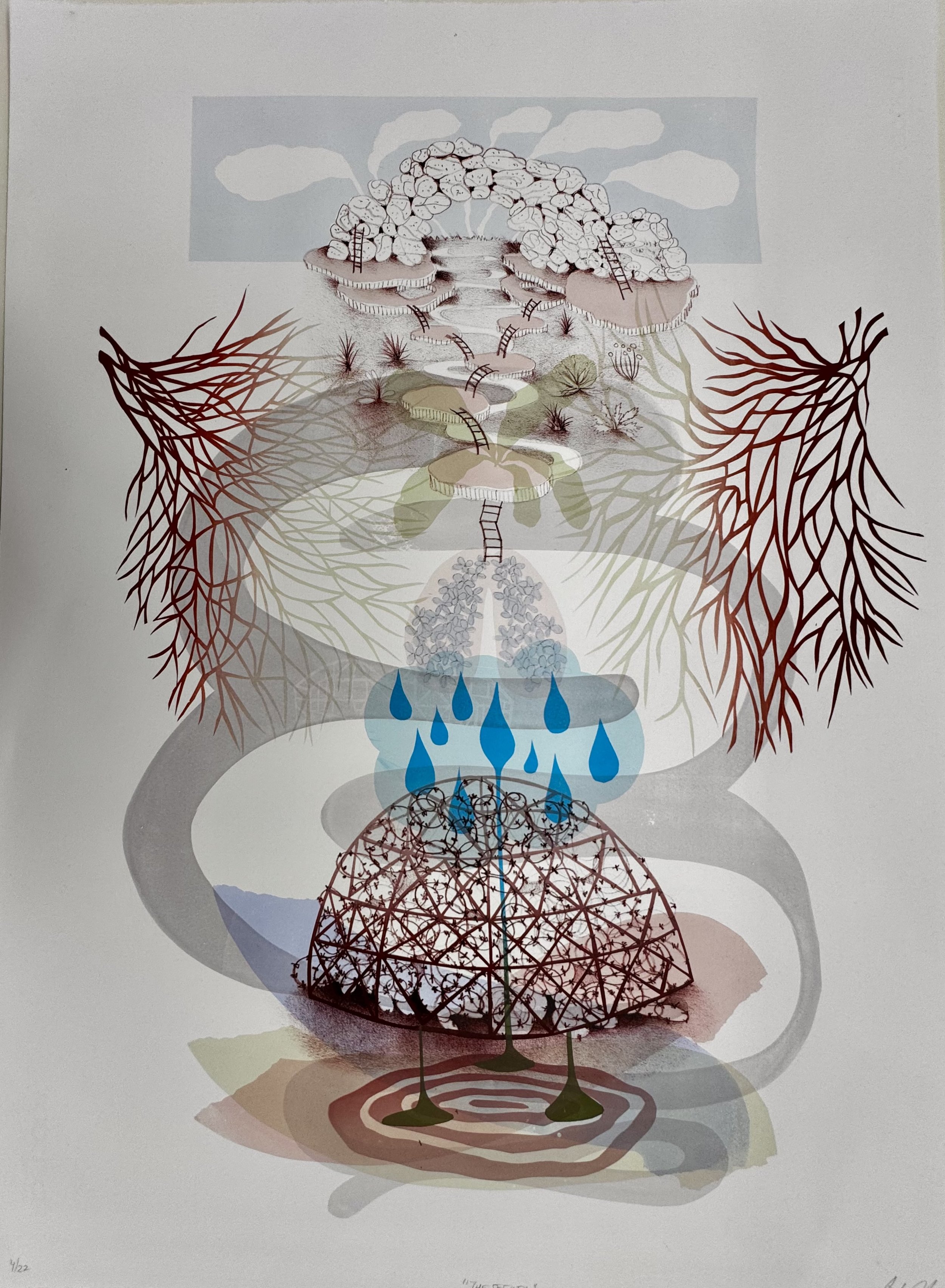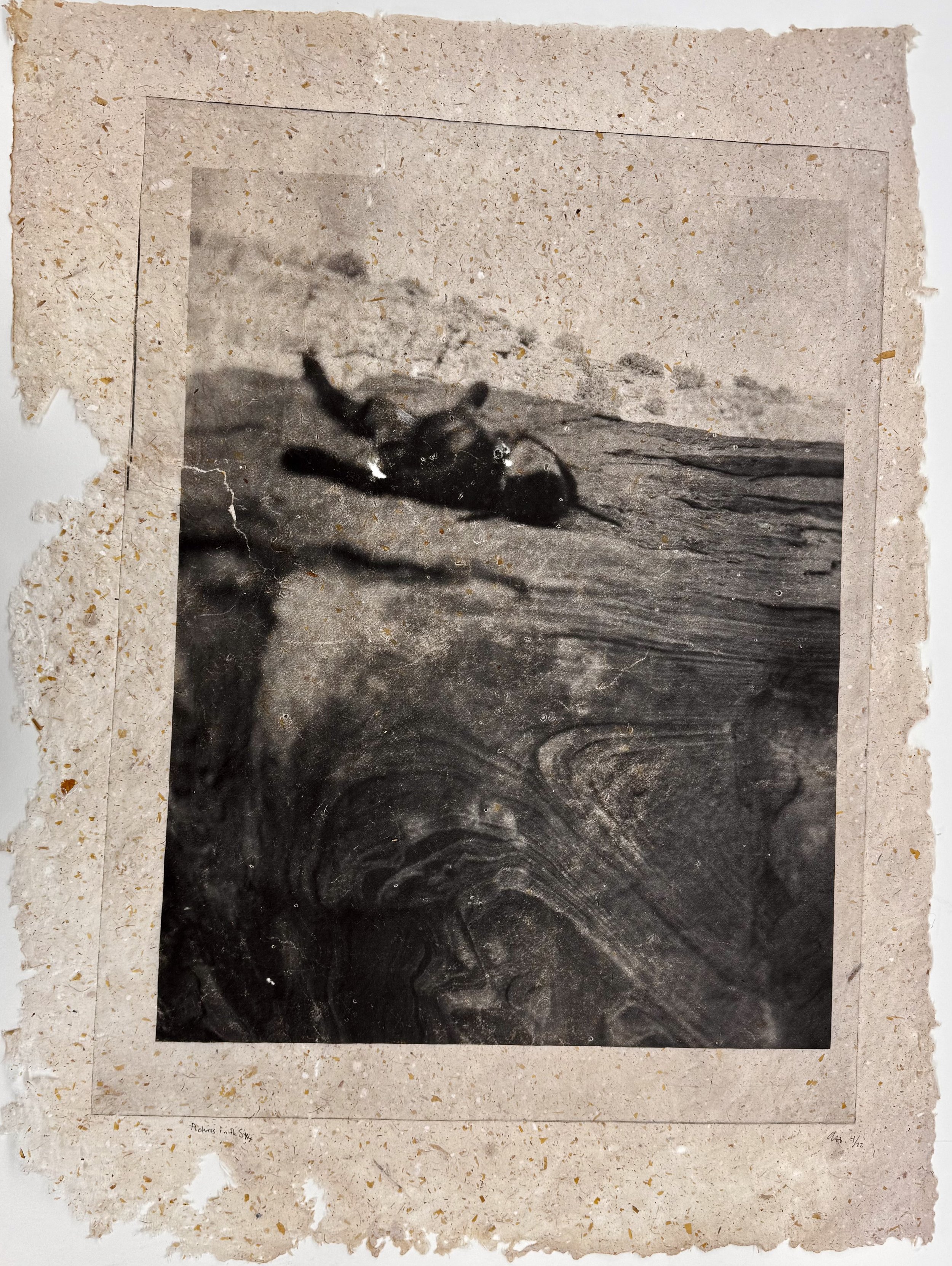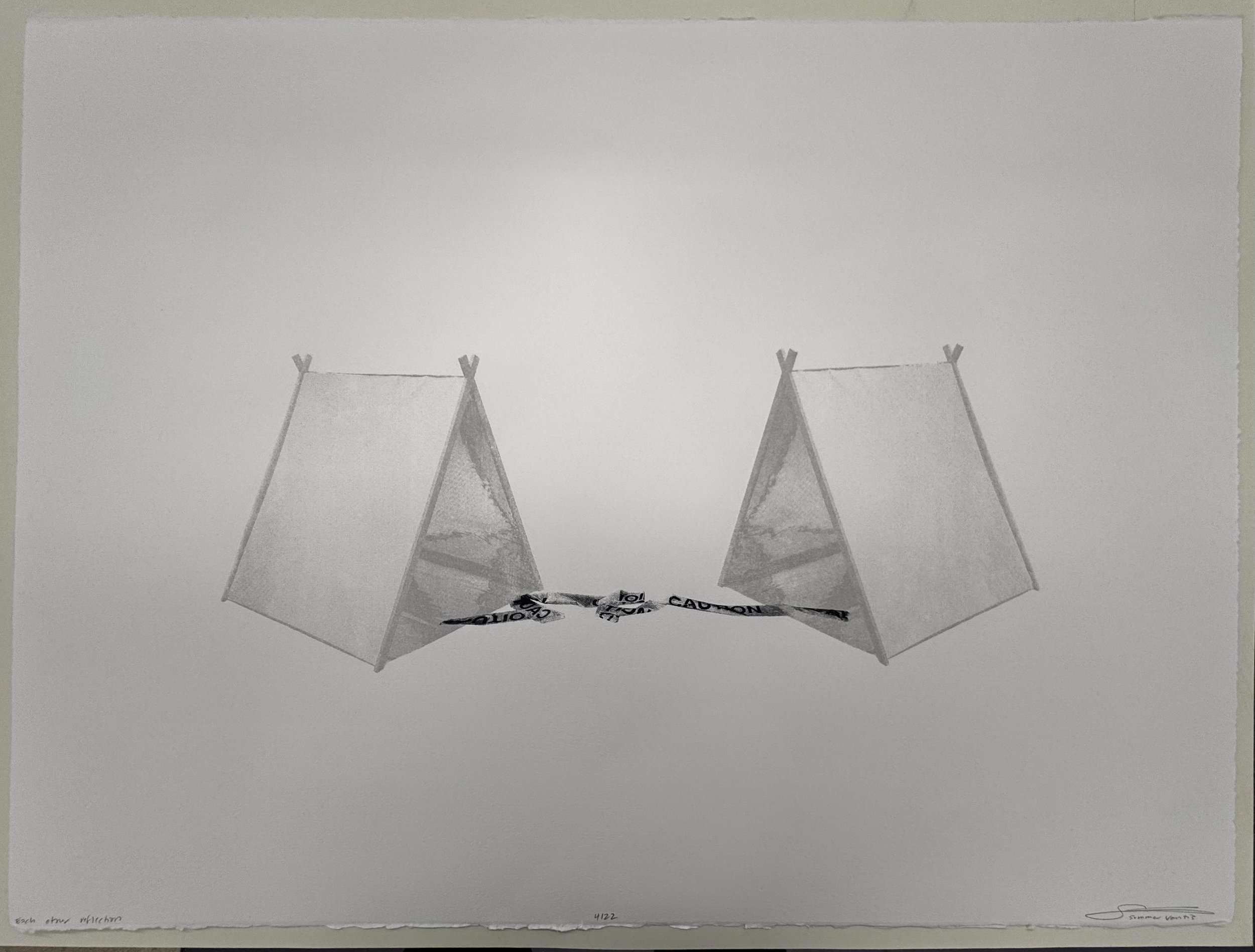Women-Wonder-Wish
Print Exchange portfolio organized by Melanie Yazzie, Boulder, CO.
The theme Women-Wonder-Wish invites artists to delve into their unique perspectives and imaginations, fostering a rich tapestry of interpretations surrounding the concepts of female identity, from girlhood to womanhood. This portfolio encourages a thoughtful exploration of the multifaceted nature of femininity, prompting artists to share their narratives about the inherent strength and resilience found within these identities. Each piece resonates with the power we hold as human beings, highlighting the individual stories that shape our experiences and influence our journeys. The chosen paper size of 22” x 30” offers ample space for artists to express their creativity, while the option for a varied edition of 22 or a captivating monotype series allows for a dynamic presentation of ideas, each artwork serving as a testament to the diverse expressions of empowerment and self-discovery that characterize the female experience. Through this collection, we seek to celebrate not only the beauty and complexity of womanhood but also the profound impact of sharing our stories in a world that often strives to define us.
MELANIE YAZZIE
MELANIE YAZZIE, Hidden Stories, Monotype, 1/1. 2025, Varied Edition 22 For more information: melanie.yazzie@colorado.edu
The Varied Edition I have created for this print exchange is titled: Hidden Stories. There are elements and symbols that represent parts of being a female in our world.
Our stories are held within us, and this work focuses on the space in between out truths.
The work captures moments - in a day week or year and holds it and honors it.
There are elements of the natural world present to remind us that they are just as important as we are.
We must work to stay in balance.
Melanie Yazzie is of the Navajo Nation. Yazzie is Professor of Art Practices and Head of Printmaking at the University of Colorado in Boulder, Colorado. She has been there since 2006. Her works belong to many collections such as: the Anchorage Museum of History & Art, the Art Museum of Missoula, the Institute of American Indian Arts, the Kennedy Museum of Art, and the Rhode Island School of Design Museum, to name a few. She has exhibited nationally and internationally in places such as: Alaska, California, New Mexico, New York, Florida, New Zealand, France, Russia, Canada, Bulgaria, Portugal, Spain, and Northern Ireland. She often takes part in collaborative art projects with Indigenous artists from many different nations. She has taught at the Institute of American Indian Arts, University of Arizona, Boise State University and at the University of Colorado in Boulder, Colorado.
Website Glen Green Galleries
CANDACE NICOL GARLOCK
I chose to create monoprints for this exchange. In this print, the concept of "Beating Time" evokes a playful, rhythmic interaction with the passage of time, suggesting a dance of harmony between the self and the moments that unfold from my past. The creative process I engage in is highly experimental, intertwining various mediums and techniques to help tell a story that incorporates bits of my sculpture, drawing, and printmaking. Through my art, I seek to pose thought-provoking questions to viewers, inspiring them to reflect critically on relationships, social identities, and broader societal issues.
For this print challenge, I explored the multifaceted concept of femininity—encompassing the identities of girl, young adult, and woman.
Title: Beating Time, Media: Monoprints varied edition 25: Viscosity Relief, Photopolymer Etching, Collagraph, 2025, 22”Wx30”H
CANDACE GARLOCK, Beating Time, print 4/25 variable edition. For more information: cgarlock@tmcc.edu
On the first day of Summer 2021, I found myself awake early in the morning, with the sun not yet risen. My three-year-old granddaughter lay cuddled beside me, her bright eyes wide open. Despite my desire to drift back to sleep, she quickly reminded me, “The birds are awake, Booma!” Her gentle invitation urged me to engage with the world. As she began to sing softly to herself, I realized it was time to rise, especially when she mentioned the commotion of the birds outside, eagerly feasting at the bird feeder, their joyous sounds wafting through the open window.
Birds first entered my artistic narrative during the early days of the pandemic, evolving into whimsical fashionista characters that embody the personalities of those around me. These playful creations serve as a constant reminder of what truly matters in my life.
In this particular print, I sought to juxtapose the whimsical nature of these fashionistas with the weightiness of a woman suspended among rocks. This figure draws inspiration from one of my "Daily Nodes," specifically "Day 83 (November 1)." While organizing my past works, I stumbled upon an old etching that resonated deeply with my current physical experience. The heaviness I feel in my body—lifting a leg, raising an arm, moving my fingers—echoes through my art.
At the center of this piece is a circle featuring an image of feet, derived from one of the “feet” sculptures in my “woods” installation. This work is a direct response to my journey living with Multiple Sclerosis, capturing the essence of navigating life in a world of both shadows and sunlight.
The playful and magical quality of monoprinting deeply resonates with my passion for experimentation. While traditional printmaking forms the foundation, I push the monoprint process using a viscosity technique that explores color, texture, and line. The final layer of each print is hand drawn with a black acrylic pen, a physical metaphor and reminder from the “Daily Nodes” project where I was healing my body and mind through the repletion of drawing.
Hannah March Sanders
“It is necessary to remember, as we think critically about domination, that we all have the capacity to act in ways that oppress, dominate, wound (whether or not that power is institutionalized). It is necessary to remember that it is first the potential oppressor within that we must resist – the potential victim within that we must rescue – otherwise we cannot hope for an end to domination, for liberation.”
― bell hooks, Talking Back: Thinking Feminist, Thinking Black
When in high school, I was given a scanner. One way in which I used it was to take “photographs” of myself, employing it as a kind of camera. I always kept my eyes closed and stayed very still. But now is a time for movement, change, and evolution. In a society that has long sought to exert power over those outside of the white male patriarchy, now is always the time to speak in the languages we know: and mine is in ink. I used a large format scanner to capture 40-50 “portraits,” which I edited in Adobe Photoshop and then printed out a selected number of them as guides in the monotype from plexiglass printmaking process. I used subtractive techniques with a paper towel wrapped around my fingers or a stick and also reduced with a stick and brush. On some of the prints, I painted directly with Gamsol to activate and disturb the ink I’d rolled onto the plexiglass. I also thinned ink with Gamsol and applied it with a brush to the surface of the plexiglass. I generally worked on 3-6 prints at a time, putting in as many hours in a stretch as life would allow. Each print was created on 30”x22” Magnani Pescia paper. Some prints have only 1-2 layers, while in others I packed in many more layers of first impressions and/or ghosting from the remaining ink on the plexi. I worked on the light table in a dark room, and this low lighting helped my focus and ability to discern subtle value shifts in my printed image guides.
Hannah March Sanders received their BFA at Tulane University and an MFA in printmaking from Louisiana State University. Along with their partner, Blake, Hannah operates http://orangebarrelindustries.com/, an artist collaborative that organizes portfolio exchanges, exhibitions and other art events. They are currently the Coordinator of the BA in Art as well as Area Head of Printmaking & Fibers, and a Professor of Art in the Department of Art + Design at Southeast Missouri State University in Cape Girardeau, MO.
In their free time, Hannah likes to worry about what they should be doing with their free time, sketchbook, and go hiking. They also enjoy rainstorms, ink pens, and the smell of books.
SANDRA MURCHISON
SANDRA MURCHISON, For more information: smurchis@emich.edu
Sandra Murchison wonders to what degree we have cared for our land. Her process frequently starts by making rubbings of historical markers in Michigan. As an example of the connection to place in Murchison’s work is seen in the text and imagery for “St. Andrew’s” which comes from a marker in front of the oldest church in Ann Arbor, Michigan and frequented by Murchison and her family. Murchison uses a print-based approach to mixed media, emphasizing the historical text. Ultimately, her work exemplifies the innate tension between how we wish to hold sacred our sense of history, place, and local community; and yet, we seem to lack conservation, exist virtually and experience rapid global warming. Our communities and ecosystems are in jeopardy. This work asks us all to seek out ways to slow this imbalance.
Prof. Sandra Murchison is the Director of the School of Art & Design at Eastern Michigan University and the Director of the Parsons Center for Arts & Sciences. Murchison also serves as the Secretary for the National Council for Arts Administrators (NCAA) Board of Directors and as the Chair of the Program Committee for the Riverside Arts Center Board of Directors. Prior to EMU, she was a faculty member at Millsaps College for 17 years, including as Chair of the Art Department and where she founded a non-profit arts center off campus in Jackson, Mississippi. As an active member of SGC International, Sandra served first as Archivist and then Vice President for Internal Affairs of the organization. Her mixed media prints and paintings have shown internationally, and she has been an invited visiting artist at institutions across this country. In addition, she has taught at such places as the Center for Contemporary Printmaking and Arrowmont School of Arts & Crafts. She earned her MFA in printmaking and painting from Louisiana State University and a BFA from Alfred University, with teaching certification.
ALANNA AUSTIN
SUSAN ALTMAN
LAUREN CARDENAS
JADE HOYER
ACADIA R. KANDORA
MICHAEL KOHLER
ASHLEY NASON
KATHRYN POLK
MIA ISABEL PONS
MIA ISABEL PONS
For this print, I screen printed the sawtooth pattern onto cream Somerset, then I added three layers of photo litho. The varied portion of the edition is in a different paper I printed and then chine collé onto the Somerset. The edition includes a variety of papers, mostly kozo and chiri, and by using these, I was able to print on both front and back, depending on what elements I wanted to appear more prominently. The Nest image came from a soft ground intaglio plate I was printing for another project. I ended up loving it, and I was able to scan and scale up that image into a photo plate.
Mia Isabel Pons is a print media artist from Oklahoma whose ongoing work explores the body as an ephemeral vessel for memory and space. Her practice explores the intersections of printmaking, papermaking, book arts, and fiber art. Pons holds a BFA in Printmaking from the University of Oklahoma and is a current third year MFA candidate at Louisiana State University.
My body is a house, a vessel, and a keeper of my past and future. It connects me to the events of my life, childhood memories, and the history of the maternal lines that came before me. This body held others is about the spiritual and physical survival of the body through the reconstruction of collected and recycled images. I am interested in the body’s invisible depths, the unseen, the emotional and the interpersonal memories it holds. My material investigations using print, paper, and transparent colors are how I explore the ephemerality of the self/body. Using images typically reserved for private moments, my work considers the body in ritual practice and my rejection of the engrained or taught lessons of performance. Through the repetition of intimate moments, the work and my body begin to claim space and agency. My body feels shame, it feels desire, it feels unbearable, it feels pleasure, it feels longing, it feels strength, it feels devotion, it feels the lessons passed along by family, and the work records these shifting experiences.
I live you
I see you everywhere
You are in everything
Our connection is more than physical
This body doesn’t belong to me
This body held others
ARISTA SLATER-SANDOVAL
GRACE UNDERFANGER
SUMMER VENTIS
SUMMER VENTIS, Each Other Reflection, Screen Print on Rives BFK, 4/22
As a woman in the United States in 2025, I feel bombarded by political and ecological crises. In this climate, I find myself seeking both protection and connection. The tent is an object that we use to get out into the landscape, to come into closer contact with our surroundings, but also to protect ourselves from those surroundings. Caution tape is a stand-in for the boundaries and barriers we set up in hopes of protecting ourselves and others. Sometimes these boundaries and barriers function as intended, but just as often they have catastrophic consequences or fail spectacularly at the protection they strive for. This image holds my personal experience as a woman, and also my desire for us all that we may cultivate modes of communal care and protection, maintaining healthy boundaries while nurturing each other and our interconnectedness.
Summer Ventis’s work uses the printed surface to address internal and external landscapes and their intersections; the imprints we leave on each other and our surroundings and the imprints that our surroundings leave on us. She received a BA in Art from Grinnell College and an MFA in Printmaking from the University of Colorado Boulder. Her work has appeared in national and international exhibitions and is held by collections including those of the Denver Art Museum and Proyecto ’ace in Buenos Aires, Argentina. She is a member of the Colorado-based collectives Hyperlink and ARTNAUTS and of Sacramento-based Axis Gallery and is Associate Professor of Printmaking at California State University Sacramento.




